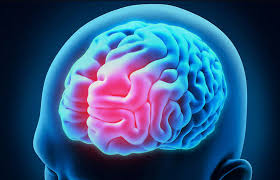In a groundbreaking revelation, scientists have uncovered a previously unknown protein associated with early-onset dementia, a form of neurodegenerative disorder known as frontotemporal dementia (FTD). This discovery promises a pivotal shift in our understanding of the molecular basis of FTD, offering hope for future diagnostic advancements and targeted treatments.

Traditionally, neurodegenerative diseases, especially dementias, have been characterized by abnormal protein aggregations, commonly referred to as amyloids. These aggregates, which play a crucial role in diseases like Alzheimer’s, were, until recently, elusive in about 10% of frontotemporal dementia cases, leaving scientists puzzled.
The newly identified protein, TAF15, was found in aggregated structures within the brains of individuals afflicted with FTD. Frontotemporal dementia results from the degeneration of the frontal and temporal lobes, impacting emotions, personality, behavior, speech, and word comprehension. Unlike Alzheimer’s, FTD tends to manifest in individuals aged 45 to 65, though it can affect people both younger and older.
The research, led by scientists from the Medical Research Council (MRC) Laboratory of Molecular Biology in Cambridge, UK, opens up avenues for developing diagnostic tools and treatments targeting TAF15. Dr. Benjamin Ryskeldi-Falcon, the study’s lead researcher, emphasized the transformative nature of this discovery, stating, “This discovery transforms our understanding of the molecular basis of frontotemporal dementia.”
The study employed cutting-edge cryo-electron microscopy (cryo-EM) to scrutinize protein aggregates at the atomic level in the brains of individuals with FTD. While previous assumptions pointed to the FUS protein, the actual culprit revealed itself to be TAF15. This unexpected outcome showcases the power of cryo-EM in unraveling molecular complexities previously beyond the reach of conventional technologies.
The Implications for Future Insights and Interventions
The identification of TAF15 as a key player in FTD has far-reaching implications for both diagnosis and therapy. Dr. Stephan Tetter, the first author of the paper, highlighted the unexpected nature of the findings, noting that “Cryo-EM is transforming our understanding of the molecular pathology of dementia and neurodegenerative diseases more broadly.”
Despite the technical constraints limiting the study to four individuals, the newfound knowledge opens the door to broader investigations. Dr. Ryskeldi-Falcon expressed the potential to develop tools for screening abnormal TAF15 aggregates in hundreds of patient samples, unraveling the prevalence of this specific protein anomaly.
The study also shed light on the overlap between frontotemporal dementia and motor neuron disease, with two individuals displaying signs of both conditions. The aggregated structure of TAF15 was identified in brain regions associated with motor neuron disease, suggesting a potential link between the two.
This groundbreaking research was made possible through funding from various organizations, including the Medical Research Council, Alzheimer’s Research UK, the US National Institutes of Health, the Alzheimer’s Society, and others. Dr. Charlotte Durkin, Head of the Medical Research Council’s Molecular and Cellular Medicine Board, acknowledged the study’s significance, stating, “Knowing the identity and basic structure of these filaments in this rare form of early-onset dementia is vital to developing early diagnostic tests and drugs to combat their formation.”
As we navigate the intricate landscape of neurodegenerative diseases, each discovery propels us closer to unraveling the mysteries of these conditions, offering renewed hope for improved diagnostic precision and targeted therapeutic interventions.